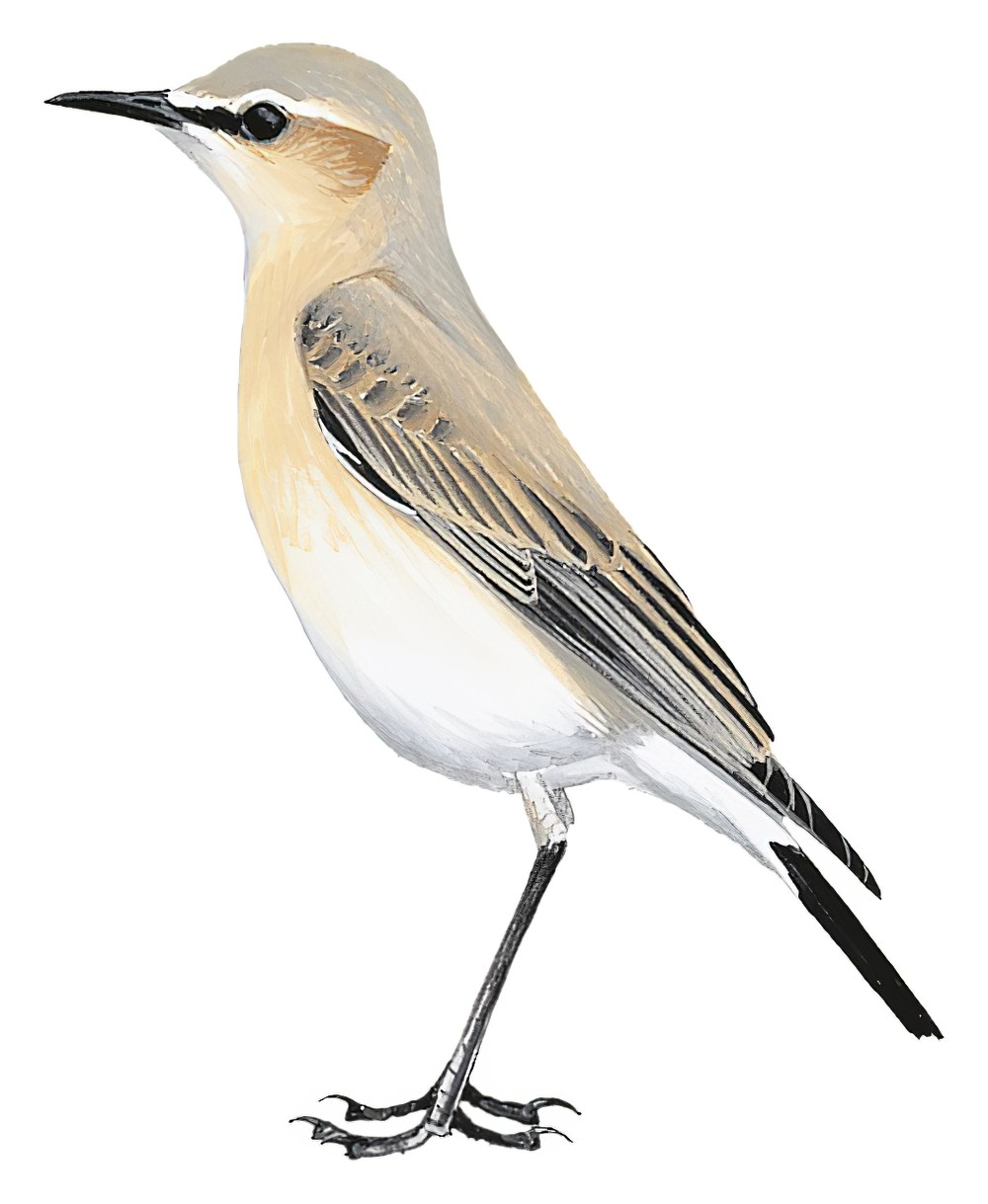Isabelline Wheatear / Oenanthe isabellina

Isabelline Wheatear
SCI Name:
Protonym: Saxicola isabellina Pl.Col. livr.79 pl.472 fig.1
Taxonomy: Passeriformes / Muscicapidae / Oenanthe
Taxonomy Code: isawhe1
Type Locality: Nubia.
Author: Temminck
Publish Year: 1829
IUCN Status: Least Concern
DEFINITIONS
OENANTHE
(Muscicapidae; Ϯ Northern Wheatear O. oenanthe) Specific name Motacilla oenanthe Linnaeus, 1758; "MOTTEUX, Œnanthe. Motacilla, Linn. Silvia et Turdus, Lath. Bec plus haut que large à la base, droit, très-fendu; mandibule supérieure un peu obtuse, courbée et échancrée à la pointe; l'inférieure plus courte, droite, pointue. — Ailes à penne batarde; la deuxième remige la plus longue. Esp. Motteux, Buff. — Turdus leucurus, Lath." (Vieillot 1816); "Oenanthe Vieillot, 1816, Analyse, p. 43. Type, by monotypy, "Motteux" Buffon = Turdus leucurus Gmelin." (Ripley in Peters 1964, X, 121); "OENANTHE Vieillot, 1816 F — "Le Motteux" Buffon; type by tautonymy = Motacilla oenanthe Linnaeus, 1758" (Dickinson & Christidis (eds.) 2014, 610).
Var. Oeanthe, Ananthe, Aenante, Aenanthe.
Synon. Campicola, Cercomela, Leucotoa, Penthodyta, Pentholaea, Philothamna, Saxicola, Sciocincla, Vitiflora.
oenanthe
L. oenanthe wheatear < Gr. οινανθη oinanthē unidentified bird mentioned by Aristotle, from its appearance in the vintage season < οινη oinē vine; ανθος anthos bloom, associated with the wheatear by later authors; "99. MOTACILLA. ... Oenanthe. 17. M. dorso cano, fronte alba, oculorum fascia nigra. Fn. svec. 217. Oenanthe s. Vitiflora. Jonst. av. 123. t. 45. f. 13. Will. orn. 168. t. 41. f. 4. Raj. av. 75. n. 1. Alb. av. I. p. 53. t. 55. β. Motacilla subtus pallida, rectricibus introrsum albis, dorso undulato. Fn. svec. 219. Oenanthes vitifloræ femina. Alb. av. 3. p. 50. t. 54. Habitat in Europæ apricis lapidosis. Sexu & ætate varia: cessante nocturno frigore advenit." (Linnaeus 1758) (Oenanthe).
isabellina / isabellinus
Mod. L. isabellinus isabelline-coloured, greyish-yellow < French Isabelle < Spanish Isabella. The origin of the colour term ‘isabelline’ is now unknown. The most likely candidate is Isabel I Queen of Castile and Spain (reigned 1474-1504), said to have promised not to change her undergarments until Spain was freed from the Moors (Granada, the last Moorish ta’ifa, fell in 1492). In 1600, a gown of isabella colour is referred to in an inventory of the wardrobe of Elizabeth I Queen of England (Macleod 1954). The link with the Archduchess Isabella, daughter of Philip II of Spain, who vowed not to change her linen until Ostend (beseiged 1601-1604) was taken, is discounted by SOED 1944 (cf. "I came across an alternative explanation, that the word 'isabelline' is actually a corruption of the Italian word zibellino. This name was given to a pelt of an animal such as a marten or Sable, worn by wealthy women during the 16th century. It may originally derive from an Arabic word meaning 'lion' and therefore mean 'lion-coloured'" (Stephen Moss 2017, Birdwatch, 299, 77)).
● ex “Isabelle” of Levaillant 1802 (syn. Acrocephalus baeticatus).
● ex “Emerillon de Cayenne” of de Buffon 1770-1783 (subsp. Falco sparverius).
UPPERCASE: current genus
Uppercase first letter: generic synonym
● and ● See: generic homonyms
lowercase: species and subspecies
●: early names, variants, mispellings
‡: extinct
†: type species
Gr.: ancient Greek
L.: Latin
<: derived from
syn: synonym of
/: separates historical and modern geographic names
ex: based on
TL: type locality
OD: original diagnosis (genus) or original description (species)












